4. How and when to use social listening?
Table of Contents
Incorporating social listening into your brand strategy is a two-fold process: mastering the nuances of this approach while understanding the optimal timing for its implementation.
As we've already established a clear understanding of social listening and its importance, the natural progression is to explore the steps and processes of crafting an effective listening strategy.
This article guides you through the practical application of social listening (the how) and the critical nature of timing (the when). Both elements are essential for harnessing the full potential of social listening and achieving tangible success in your brand strategy.
How to use social listening
How you use social listening will entirely depend on what is most beneficial for your brand, industry or unique needs. It's a personalized process, most effective when you leverage its benefits for your specific business goals. While your approach to social listening will require a personal touch, several fundamental steps are crucial in establishing a robust and effective listening strategy. These elements form the foundation of a social listening model that resonates with your brand's requirements and aspirations. Let's dive in.
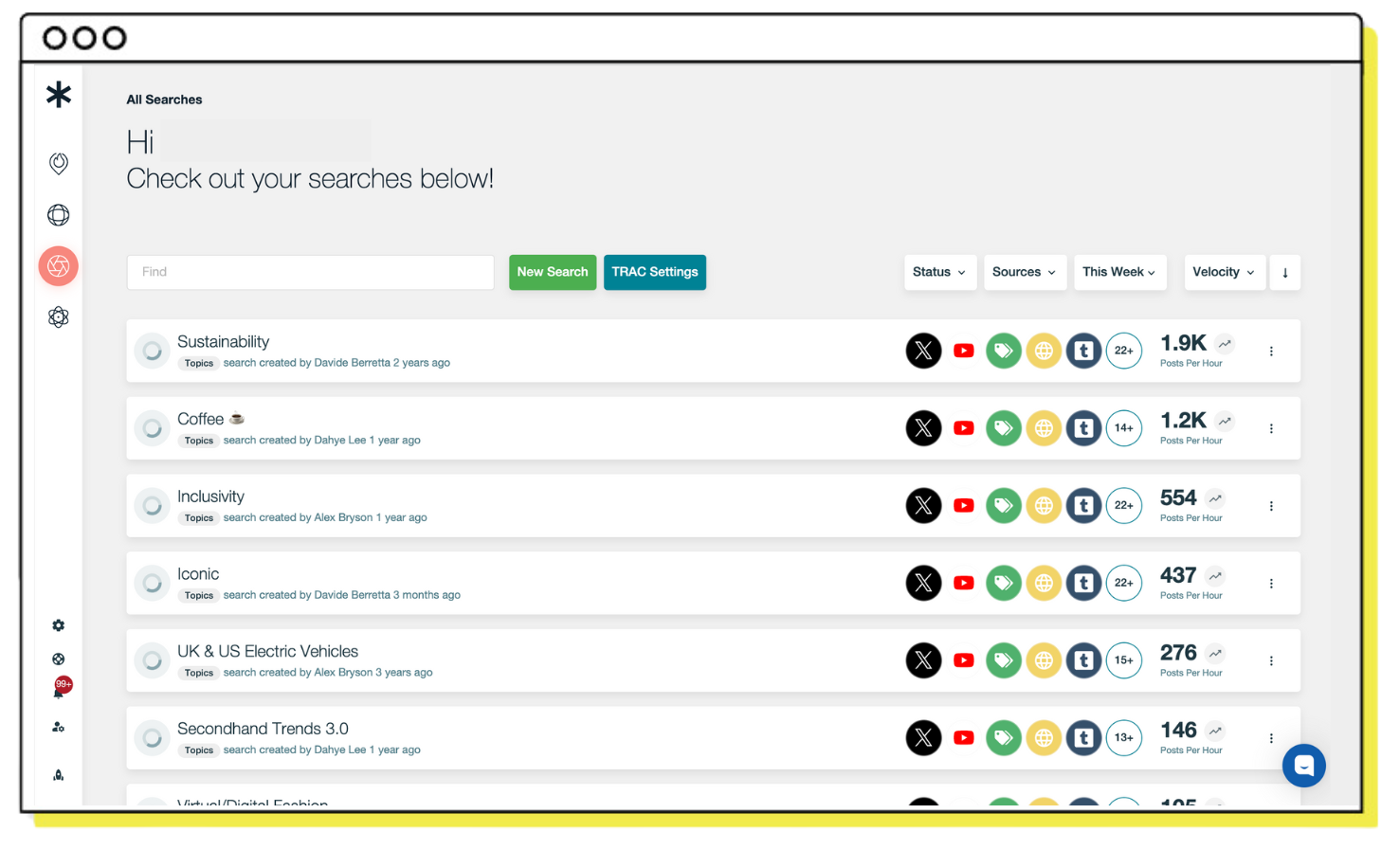
Setting up your social listening tools
The initial phase of implementing a social listening strategy hinges on selecting the right tools, configuring keywords, setting up filters, such as regional focus and customizing alerts. This step is significant, as the effectiveness of your listening model largely depends on the capabilities and features of the tools you choose, and the time you spend familiarizing yourself with and personalizing your platform set-up to uncover unique, relevant, and insightful data about your audience to guide your subsequent steps.
Advanced tools like Pulsar TRAC offer a more nuanced approach than traditional or generic social listening platforms, delving deep into what we call "audience intelligence". For this first step to be successful, however, it’s vital to clearly outline what you expect from your tools, deciphering your goals and objectives to tailor your listening strategy accordingly. Whether you focus on specific keywords, monitor conversations on platforms like X (Twitter), or analyze interactions of distinct audience segments with your brand.
Remember, different social listening tools provide varying insights and features, so your choice should align with your strategic objectives and the insights you seek.

Analyzing the data
Once the initial tool set-up process is complete, it’s time to start thinking about data analysis. As highlighted in our previous discussions, the distinction between social listening and social monitoring lies in analytical depth. While social monitoring captures real-time data - primarily concerned with the here and now, social listening provides a foundation to shape future strategies through reflective analysis of audience data.
The analytical nature of social listening is crucial to its application. It goes beyond merely collecting insights; it involves dissecting and interpreting these findings to steer upcoming business decisions. This phase often encompasses sentiment analysis, identifying emerging trends, and segmenting your audience based on their interactions and preferences.
By exploring the reception of your campaigns, the topics or trends gaining traction within your industry, and the most engaged and responsive segments within your audience most promising for target marketing - you elevate your social listening strategy. It's not just about gathering audience insights; it's about going granular and delving into the nuances of these insights. Effective social listening demands that beyond understanding your audience on a deeper level, you meticulously analyze audience data to inform more strategic business decisions.
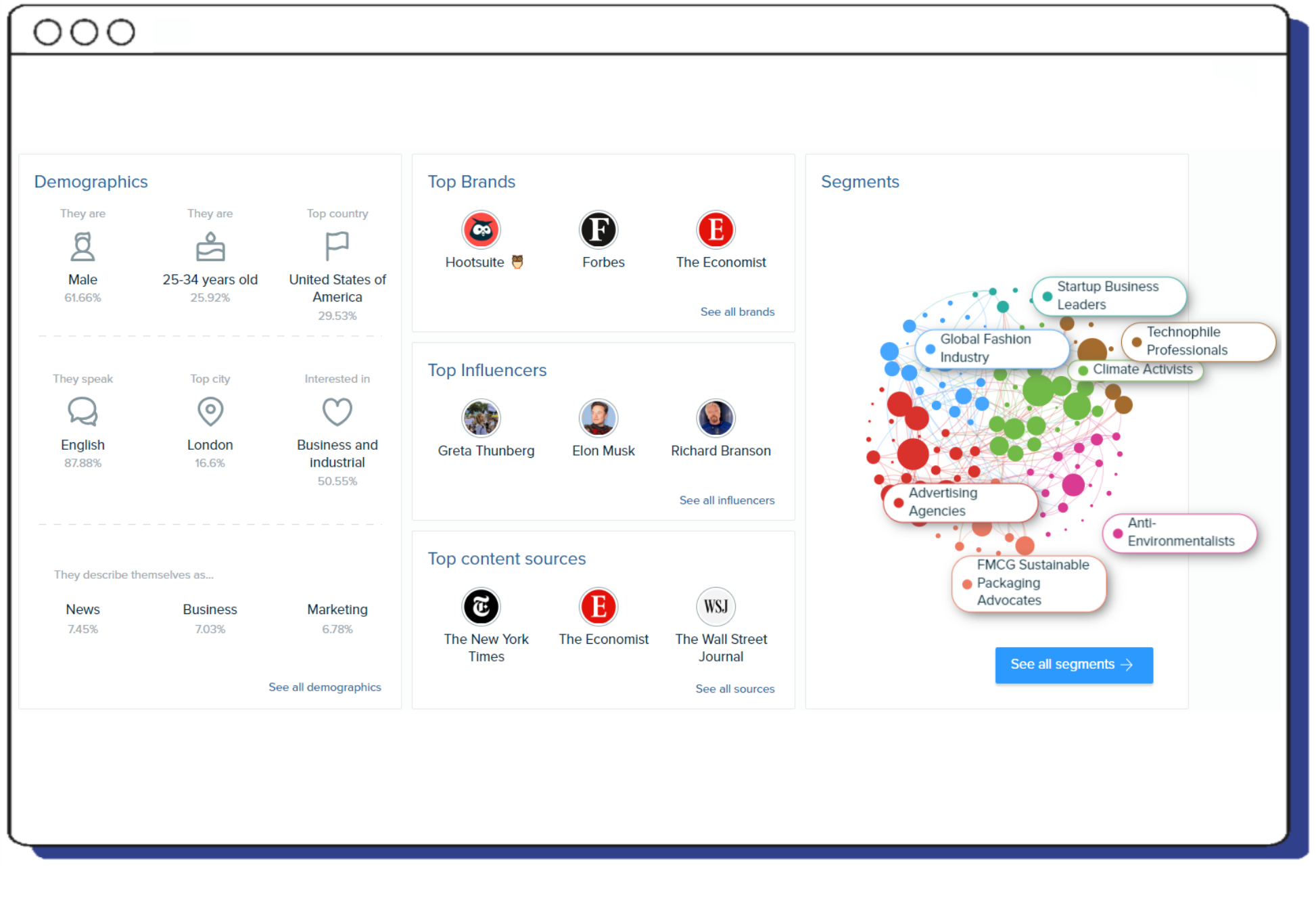
Integrating insights into strategy
As we’ve touched on, what sets social listening apart from social monitoring is the forward-thinking nature of the approach. At this stage, it’s time to do something with the audience data accumulated - namely, to apply the insights gained from social listening to marketing strategies and decision-making.
Let’s consider what this could look like, using sentiment analysis as an example. Through social listening, a fashion brand discovers that a recent campaign sparked negative sentiment due to customer perceptions of mismatched prices and material quality. This meant that for subsequent releases, the brand made some strategic changes to the materials they use and conducted market research into competitive prices to better meet customers' needs and expectations.
Similarly, audience segmentation is a fundamental aspect of social listening that we can use to influence marketing decisions. Take the example of the fashion brand again. Through social listening, the brand gains deeper insights into its diverse audience segments, understanding how to tailor its message and appeal to different groups or communities. They find that while one segment appreciates their puffer coats for their warmth and practicality during winter, another trendier segment favors these coats for their alignment with the oversized fashion trend prevalent in fashion-forward circles. These insights, acquired through social listening, equip the brand to adopt a more nuanced marketing approach. For one segment, advertising would highlight the coat's functional features and materials, while for the other, the focus would shift to align with fashion trends. This targeted strategy ensures that marketing efforts resonate with each audience subset.
When to use social listening
The saying "timing is everything" rings especially true for social listening. For your strategy to make a significant impact and truly connect with your target audience, it's not just about mastering using social listening or implementing best practices; It's equally about choosing the opportune moment to initiate the process. The timing element goes beyond the simple dichotomy of reactive versus proactive - though proactivity is always preferred. Instead, timing in social listening involves considerations such as aligning with campaign schedules, staying ahead of emerging trends, and regularly assessing the health and reputation of your brand.
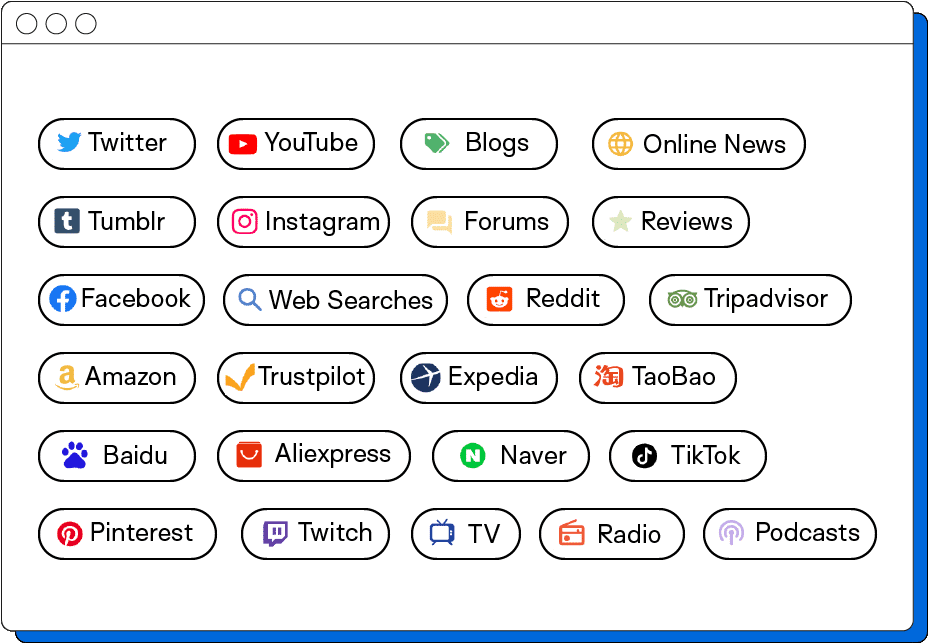
During campaign launches
A new campaign is the best time to make the most of social listening to ensure its release is optimal and insightful. Implementing social listening during the rollout of marketing campaigns or new product releases provides immediate feedback into public reaction. Access to real-time data allows you to shape your strategies dynamically, allowing your brand to continually evolve and adapt based on concrete, actionable data. By closely monitoring audience responses from the outset, you can make informed adjustments to maximize the campaign's effectiveness and align more closely with your target audience's preferences and expectations.
A few ways you can make use of social listening during campaign lunches include:
- A/B testing: Social listening allows you to compare audience engagement and reactions to different versions of a campaign to determine effectiveness.
- Influencer collaboration insight: Use social listening to gauge how your audience is responding to the influencer’s posts and the effect this is having on your overall brand image or perception.
- Monitoring competitor reaction: Keep an eye on how competitors respond to your campaign using social listening. Ask yourself: are they launching counter campaigns? And, how are audience members reacting to these campaigns? Paying attention to these instances can tell you a lot about your next moves going forward.
- Customer feedback: Arguably the most important, customer feedback provides valuable insights for immediate improvement. Our customers are at the heart of our businesses, driving their success and sustainability. By monitoring direct feedback on social media, you can adjust your tactics for real-time or future improvements to better suit the needs and wants of your customer base.
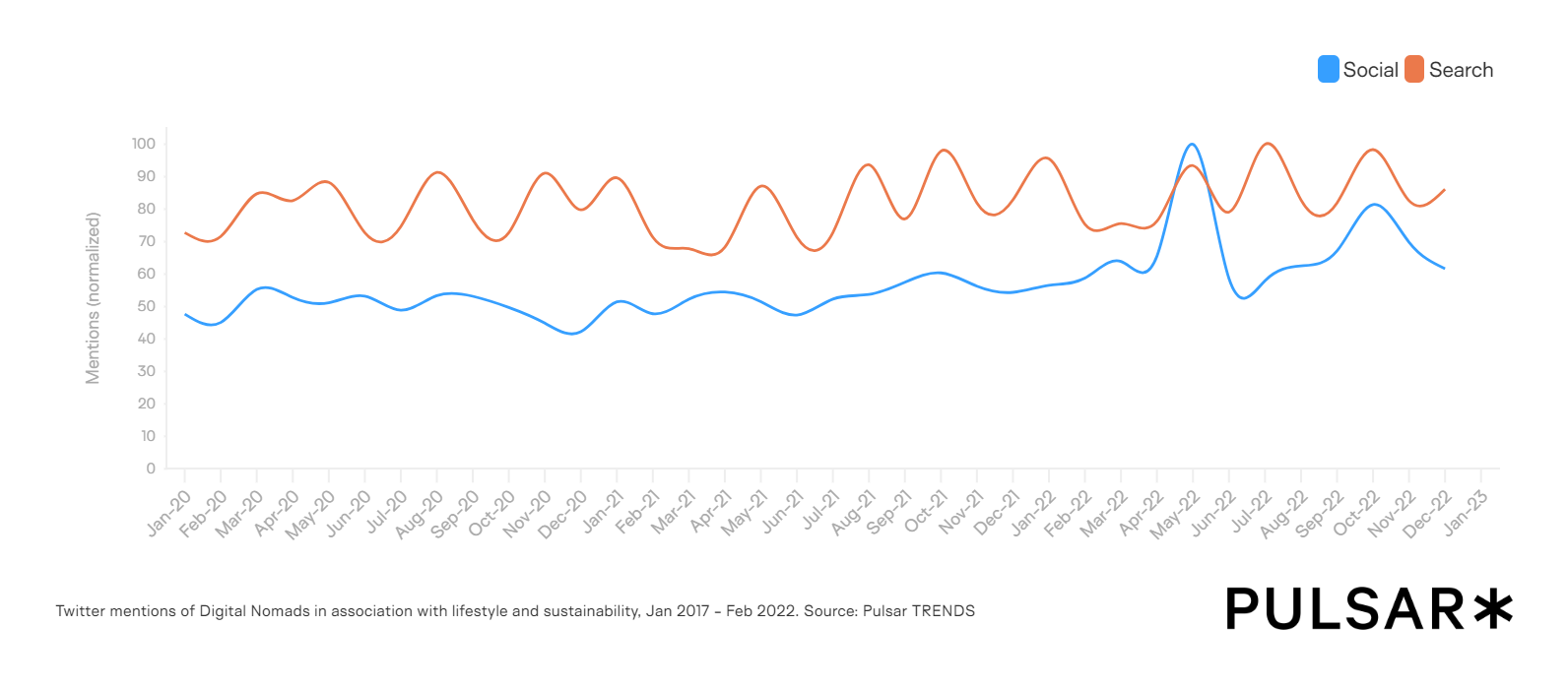
In response to market trends
Due to the ever-evolving nature of the digital world, consistently staying ahead of market trends and customer preferences to ensure your brand never gets left behind is vital. New trends form, grow and adapt daily on social media, with users and brands consistently contributing and interacting, regularly redefining their meaning and helping them evolve as more diverse communities join the discussion. Jumping onto relevant trends is crucial for businesses to be seen as fresh and up-to-date, allowing them to reach new audiences who are active and engaged with the relevant topics, keywords, and hashtags.
Leveraging social listening for trend analysis is transformative. It gives brands the bird's eye view necessary to assess how these trends are shaping and evolving. This allows marketers to track their ebb and flow and gain insight into how their target market engages with their brand, identifying the demographics most involved in these discussions.
Social listening in response to market trends is invaluable for aligning your brand with the zeitgeist and tailoring your strategies to resonate with existing and potential customers.
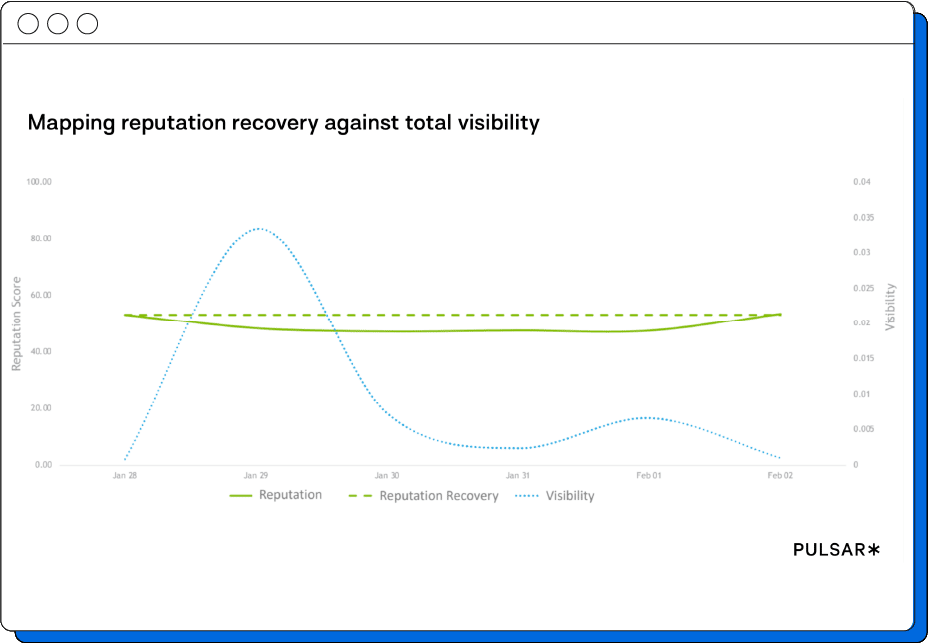
For crisis management
As previously highlighted, the most effective use of social listening leans towards a proactive rather than reactive stance, particularly in managing potential PR crises.
Consider a scenario where a renowned software company releases an update for its latest smartphone. Thanks to social listening, the company quickly detects a wave of user complaints about the update, specifically regarding app malfunctions. Armed with this real-time feedback, the tech team begins work on a fix, the customer service team assists concerned customers, and the marketing team takes to social media to provide frequent updates on the situation.
By swiftly handling the issue, aided by social listening, the company can address the problem before it escalates, safeguarding its brand reputation and maintaining customer trust.
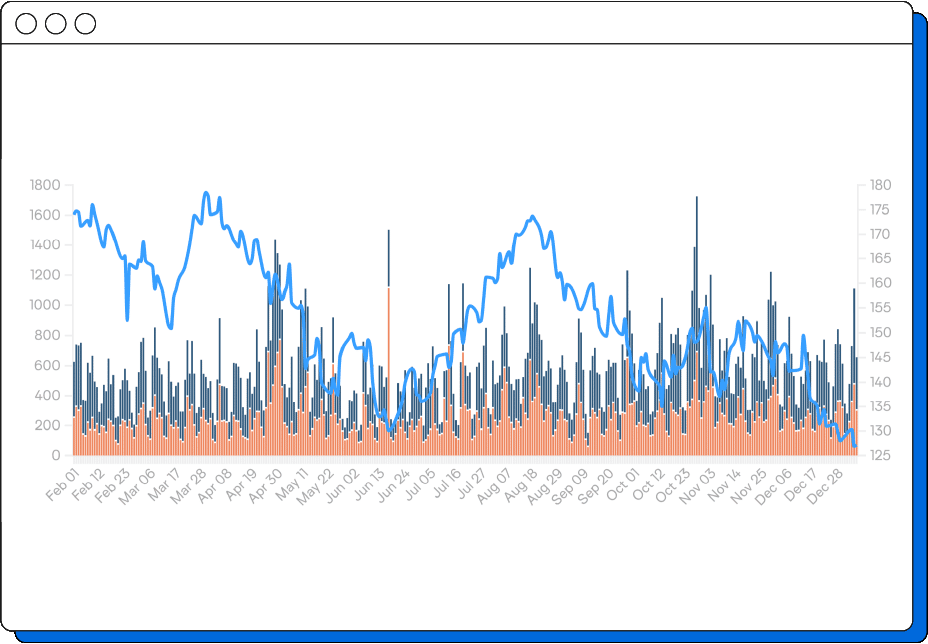
Regular brand health checks
Consistent monitoring of brand health is as vital as responding to crises. Utilizing advanced tools like Pulsar TRAC for regular brand health assessments ensures your brand remains resilient and positively perceived. Think of it as preventive healthcare for your brand: it’s far more efficient to sustain good health than to recover from a downturn.
Much like a routine health check-up, regular brand assessments using social listening tools provide a comprehensive view of your brand’s well-being.
Audience segmentation is necessary for maintaining a healthy brand. But where exactly is the link between your brand's health and its audiences? In essence, your brand health is intrinsically linked to the satisfaction of your audience.
As we already know, segmenting your audience into groups exhibiting shared affinities means you gain insights into their unique preferences and needs. This process allows for more targeted and effective communication, ensuring your brand anticipates and meets your online communities' evolving and adapting needs and wants.
By consistently tuning into your audience and who they are, as well as taking the time to understand your customers' direct feedback, you're positioning your brand to thrive.
The key to social listening success: harmonizing strategy and timing
To conclude, there is so much more to social listening than grasping its concept and implementing it. For your social listening strategy to be truly effective, it’s vital to harmoniously combine both the 'how' and 'when' aspects for a fully-fledged and nuanced approach. Timing is everything when it comes to social listening, and coupled with strategic know-how, you’re destined for social listening success and campaigns that resonate deeply with your target audience.
